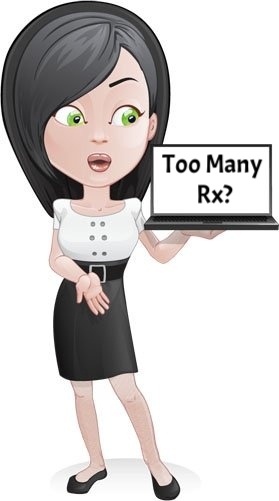Mental Health | the use of Stimulants is quite popular, beware.

 Mental Health | Misuse of prescription stimulants is associated with significant morbidity.
Mental Health | Misuse of prescription stimulants is associated with significant morbidity.
The following article is part of conference coverage from the 2019 American Academy of Physician Assistants Annual Meeting (AAPA 2019) in Denver, Colorado.
The use of prescription stimulants to enhance cognitive function has become increasingly popular among college students. However, research focused on the frequency with which students in physician assistant (PA) programs use prescription stimulant products is lacking. Therefore, a team of students from the department of PA studies at Long Island University sought to determine if PA students represented a population at risk for stimulant misuse.
Their research was presented at the American Academy of Physician Assistants (AAPA) annual meeting, held May 18 to 22, 2019, in Denver, Colorado.
A digital survey was deployed through the New York State Society of Physician Assistants to understand how PA students are affected by prescription stimulant misuse. Participants remained anonymous; data were collected on demographic information; history of attention-deficit/hyperactivity disorder (ADHD), attention-deficit disorder (ADD), and/or narcolepsy; alcohol use; experience with prescription stimulants; and experience with illicit substances. Out of 460 survey respondents, 417 met inclusion criteria. A total of 68 students reported using prescription stimulants in the past 5 years, 48 (70.6%) of whom did not have ADHD, ADD, or narcolepsy. A total of 75% of respondents without a diagnosis started using stimulants as undergraduates.
Out of 460 survey respondents, 417 met inclusion criteria. A total of 68 students reported using prescription stimulants in the past 5 years, 48 (70.6%) of whom did not have ADHD, ADD, or narcolepsy. A total of 75% of respondents without a diagnosis started using stimulants as undergraduates.
The top reasons provided for using prescription stimulants were to focus, to stay awake longer, and to enhance academic performance, with nearly two-thirds reporting that the stimulants achieved the latter intended goal.
Although students in PA programs do not misuse stimulants to as great an extent as college students (11.5% vs 17.0%, respectively), screening for stimulant misuse should be considered in this population. “With over 1 in 10 students misusing stimulants, program faculty and preceptors should be aware of the signs and symptoms and intervene when needed to protect both students and patients,” the authors concluded.


